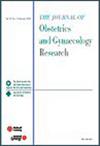Maternal and perinatal outcomes of birth center births compared to planned home births: A nation-wide, propensity-matched analysis
Abstract
Aims
Rates of community births, including home and birth center births, have steadily increased in recent decades. Safety outcomes of community births have primarily been compared to hospital births. This study compares maternal and infant morbidity between birth centers and home births in the United States.
Methods
We identified planned home births and birth center births in 2016–2021 using the Centers for Disease Control and Prevention National Vital Statistics System. We used propensity score matching to compare each birth center birth to the most similar home birth, with outcomes including maternal and neonatal adverse events recorded on the birth certificate.
Results
We identified 262 954 community births (42% in birth centers; 4% involving maternal or infant morbidity). After propensity score matching, we analyzed outcomes in a sample of 97 759 pairs of birth center births matched to planned home births. In the matched sample, maternal and infant morbidity was more likely in birth center births than in home births (odds ratio [OR]: 1.13, 95% confidence interval [CI]: 1.08–1.18). This difference was primarily due to higher maternal morbidity at birth centers (OR 1.57, 95% CI 1.44–1.71), with the largest difference seen for severe perineal trauma. Overall infant morbidity did not differ significantly between the two settings.
Conclusions
In the United States, planned birth center births have higher rates of maternal morbidity than planned home births, mostly due to higher rates of severe perineal trauma. These data could support informed choice of community birth settings for patients considering home birth or birth at a birth center.

 求助内容:
求助内容: 应助结果提醒方式:
应助结果提醒方式:


